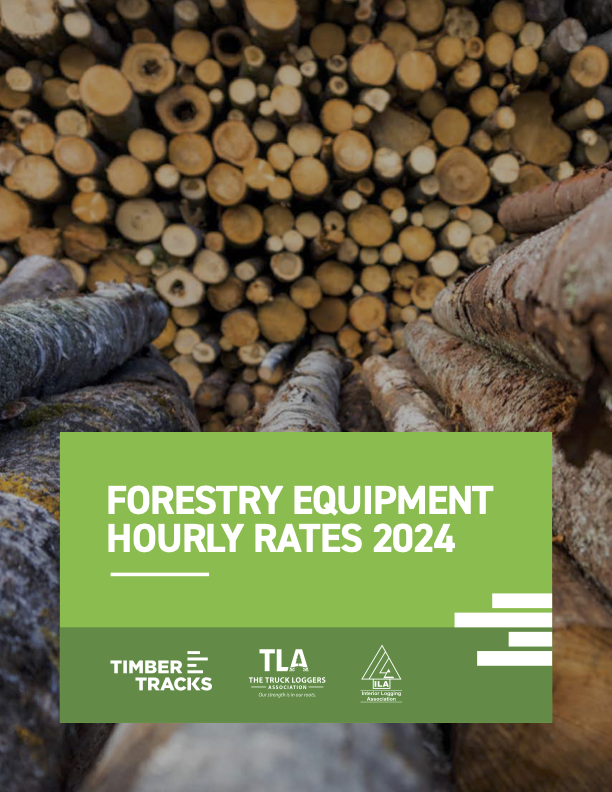EQUIPMENT RATES
The TimberTracks Hourly Rate Project was initiated with a goal to provide independent forest sector based hourly equipment rates that recognize the costs of production. Forestry is a production environment and the equipment rates should reflect that.
The data collected for this Project was from industry – those that make, sell, and service the equipment and those that own and operate the equipment.
Forestry equipment hourly rates
The forest sector, a cyclical industry that has been on an upcycle for the last few years, has been showing some signs of weakness recently. Regardless of the economic cycle, however, one thing does not change: the movement of logs from the forest to sawmills. The volumes may be higher or lower, but logs still move, and this means logging services are required. In British Columbia, independent logging contractors are mostly providing those services.
Over the past few years, there has been a lot of discussion about contractor sustainability. The Ministry of Forests, Lands, Natural Resource Operations and Rural Development released 13 recommendations of the Contractor Sustainability Review in an effort to improve logging contractor sustainability. The first two recommendations outlined implementation of transparent rate models that will allow contractors and licensees to negotiate rates using detailed site- and circumstance-specific data instead of positionally negotiating all-found rates (an hourly metric that assumes the machine and worker are already on site and ready to perform the required work).
The foundation of any rate is understanding equipment and personnel hourly rates. Four years ago, we began collecting data on logging equipment costs and operating circumstances. That database considers over 50 different operating circumstances and cost factors for owning and operating logging equipment in British Columbia, whether in the Coast or Interior region. Establishing market-reflective hourly rates is the first step in building an efficiently supply-managed industry.
This past summer, we built new forest sector hourly rates from the ground up using actual data obtained from logging contractors, equipment manufacturers, and licensees. These data points were fed into a model that calculates hourly rates assuming a reasonable average operating circumstance in the industry. The TimberTracks British Columbia Forest Sector Hourly Rates publication is available to TimberTracks subscribers and under licensing agreements to Truck Loggers Association and Interior Logging Association members.
Over time, the TimberTracks Forest Sector Hourly Rates will evolve to recognize a range of changing factors. These will allow long-term set rates to be replaced by ones that reflect actual operating circumstances and market factors. This significant development will lead to a healthier industry overall by enabling market participants to realize more opportunities together. They will be able to achieve cost synergies, all to improve the sustainability of British Columbia’s forest sector.
TimberTracks Hourly Rate publication is available free to Truck Loggers Association and Interior Logging Association members.

If you would like to purchase a copy of the TimberTracks Forestry Equipment Hourly Rates, please purchase here.

